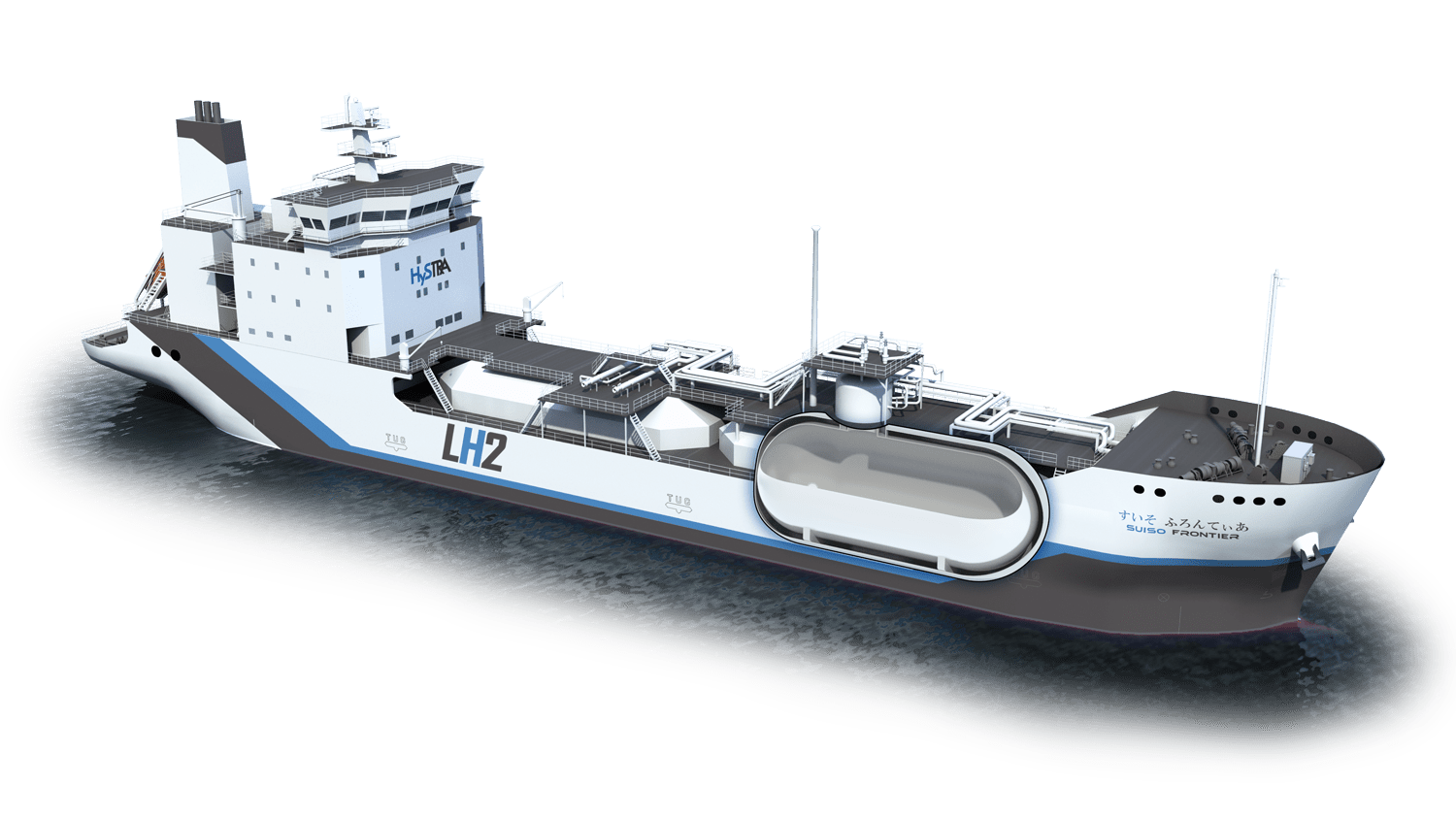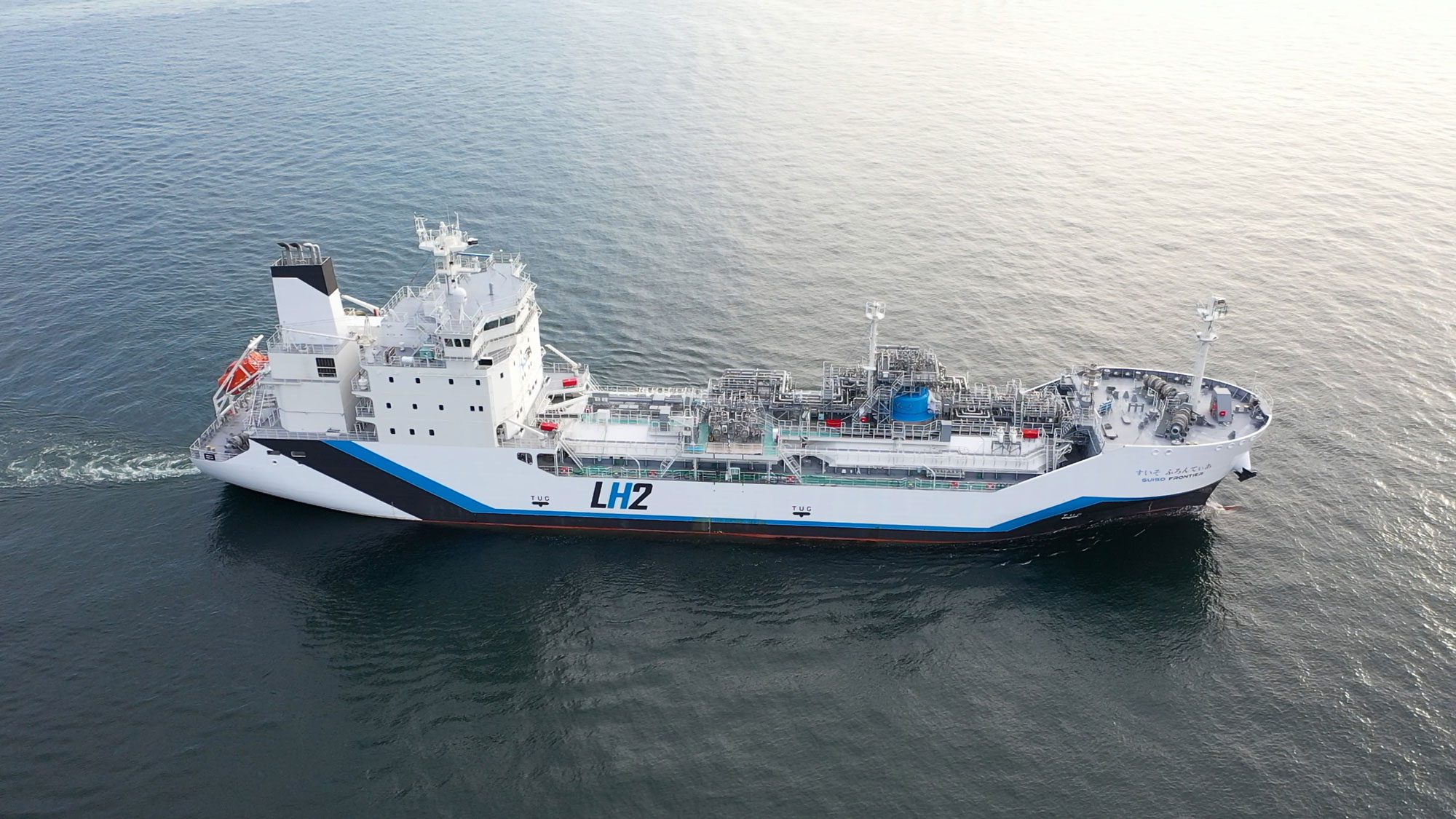Liquefied Hydrogen Carrier
The Suiso Frontier is the world’s first liquefied hydrogen carrier. The ship build was completed in 2020, designed and constructed using the technical knowledge of Kawasaki Heavy Industries.

Stage 6. Transport (LH2 Carrier)
Location: Port of Hastings to Kobe, Japan
The loading of liquefied hydrogen onto the Suiso Frontier for the return journey to Kobe, Japan, makes the HESC Project the most advanced and scalable hydrogen project in Australia and the first project in the world to make, liquefy and transport liquid hydrogen by sea to an international market.
The Suiso Frontier embodies the technological advancements being achieved in the effort to create a cleaner future.
Hydrogen has never been shipped in liquid form on this scale before. This is a world first.

Suiso Frontier Facts
The Suiso Frontier is the world’s first liquid hydrogen carrier, custom built for the HESC Pilot Project.
The Suiso Frontier has been built by Kawasaki Heavy Industries (KHI) to transport liquefied hydrogen from the Port of Hastings, Victoria, to Kobe, Japan.
In Japanese, “suiso” means hydrogen, and the ship’s state of the art engineering pushes technological frontiers with its impressive design.
Measuring in at 116 metres, the Suiso Frontier stretches over the length of a soccer field.
The ship has a gross tonnage of 8,000 t, just shy of the weight of the Eiffel Tower.
The journey from Kobe, Japan to Hastings, Victoria will take two weeks.
Onboard, you can find up to 25 crew members.
1,250 m³
The ship’s centrepiece is its 1,250 m3 Liquefied Hydrogen (LH2) storage tank.
1/800th
The tank can safely carry liquefied hydrogen at 1/800th of its original gas-state volume.
-253°C
The tank keeps the hydrogen at the cryogenic temperature of –253°C.
Existing technologies developed for the JAXA Tanegashima Space Centre have been drawn on, to manufacture ultra-high thermal insulation performance for the LH2 storage tank – similar to a coffee thermos.
The LH2 tank features: double-shell structure with vacuum insulation between overlapping inner and outer shell layers supported by high strength glass-fibre-reinforced plastic.
